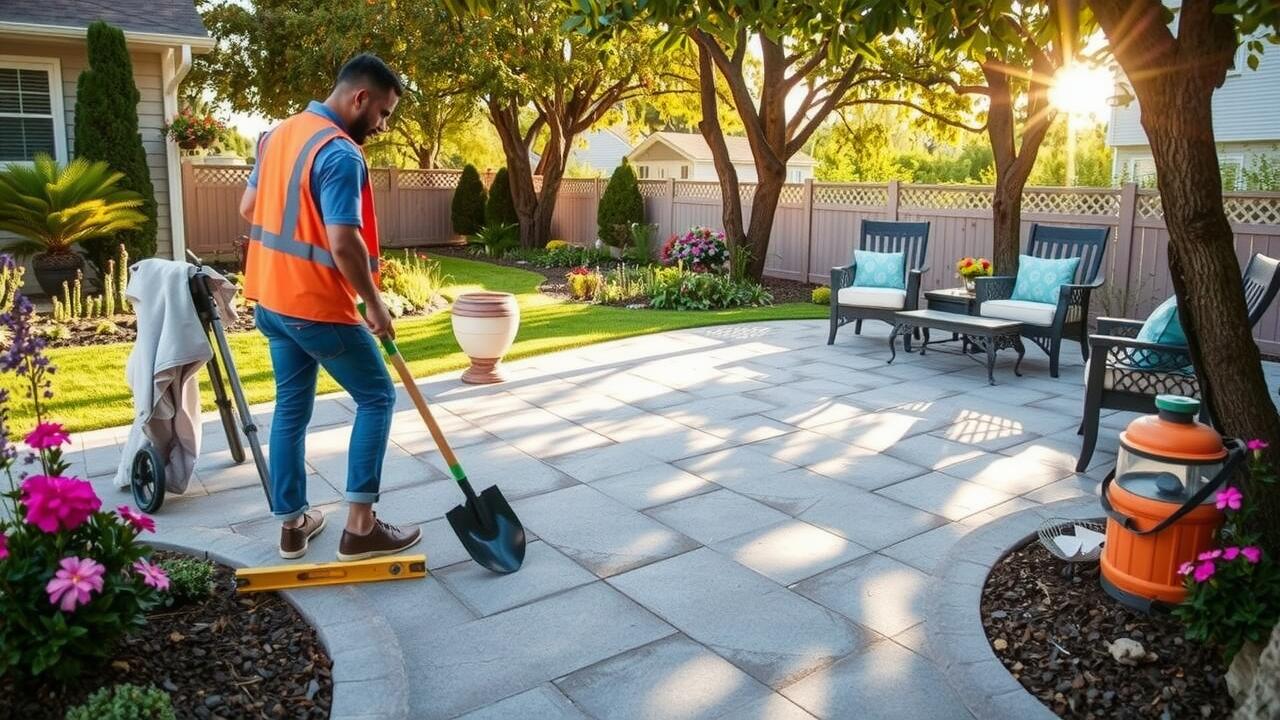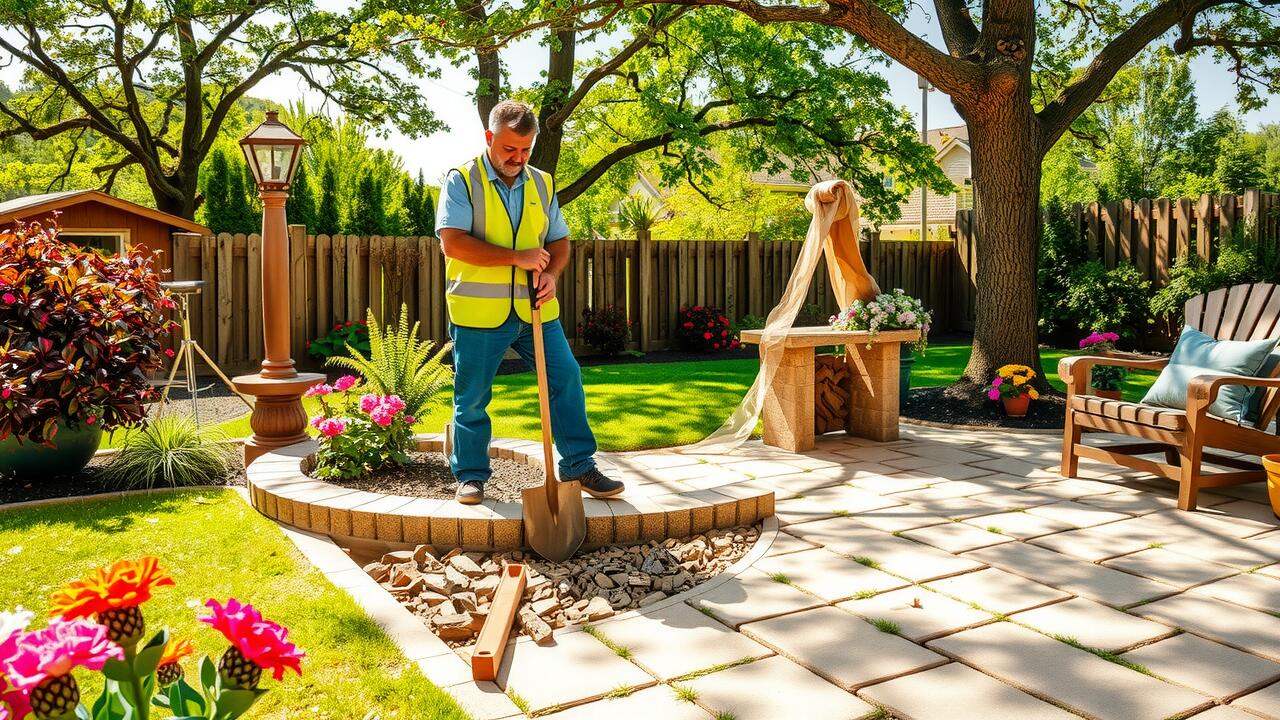
Exploring Paver Patios
Paver patios offer an attractive and durable solution for homeowners looking to enhance their outdoor spaces. These patios consist of individual paving stones or bricks, which can be arranged in various patterns, allowing for creative designs. The versatility of paver materials provides a range of color and texture options. This flexibility helps homeowners match their patios to existing landscapes or home exteriors. Additionally, the interlocking nature of pavers contributes to their stability, making them less prone to cracks compared to poured concrete.
When considering patio installation, the initial cost and long-term value are important factors. While the upfront investment for paver materials may be higher than some alternatives, they often prove more cost-effective over time due to their longevity and low maintenance needs. A well-installed paver patio can withstand various weather conditions without significant wear, translating to fewer repairs and replacements in the future. This enduring quality can make paver patios a wise choice for those seeking an economical yet stylish outdoor solution.
Advantages of Interlocking Pavers
Interlocking pavers offer a versatile and appealing option for patio installation, as they come in a variety of colors and shapes. This allows homeowners to create unique patterns that enhance the outdoor aesthetic. The modular design of interlocking pavers ensures ease of installation, making it a project that can be tackled by DIY enthusiasts. Additionally, they provide stability once laid out properly, reducing the risk of shifting or settling over time.
Another significant advantage of interlocking pavers is their durability. Made from materials such as concrete or stone, they withstand varying weather conditions, making them suitable for different climates. Their resistance to cracking and fading ensures that the patio maintains its visual appeal with minimal effort. If necessary, individual pavers can be easily replaced without affecting the overall layout, making this an economical choice for long-term patio maintenance.
Choosing Wood for Your Patio
When selecting wood for your patio, several factors come into play. Cedar and redwood are popular choices due to their natural resistance to decay and insect damage. These woods provide aesthetic appeal with their rich colors and can withstand outdoor conditions well. However, they tend to be on the pricier side. Another option includes pressure-treated lumber, which is often more affordable and durable. This wood is treated to resist moisture and pests, making it a practical choice for patio installation.
Considering the budget, it’s essential to balance cost with quality. While cheaper lumber options like pine are available, they may not hold up as well in outdoor environments. Taking the time to research and compare options ensures that you choose wood that fits your budget without compromising on longevity. Proper patio installation techniques, such as ensuring proper drainage and sealing the wood, can also enhance durability and protect your investment over time.
Cost-Effective Lumber Options
When considering wood for your patio installation, choosing the right type of lumber can significantly impact costs. Pressure-treated pine is a popular choice due to its affordability and resistance to rot. It’s widely available and easy to work with, making it ideal for DIY projects. Other options like cedar and redwood offer natural resistance to insects and decay but come at a higher price point.
Reclaimed wood provides another cost-effective alternative for patio installation. Not only does it add character and charm, but it can also save money compared to buying new lumber. Sourcing local salvaged wood from old buildings or fences can yield beautiful materials while being environmentally friendly. Each of these options allows homeowners to create a durable and visually appealing patio without breaking the bank.
Patio Maintenance on a Budget
Maintaining a patio on a budget involves simple strategies that can significantly extend its lifespan. Regular cleaning is essential to prevent dirt and debris buildup. Tools like brooms, pressure washers, and mild detergents can be used to keep surfaces looking fresh. Sealing pavers or wood every few years can protect them from weather damage and stains, minimizing long-term repair costs.
In addition to cleaning, consider the seasonal maintenance tasks to prepare your patio for various weather conditions. Inspecting for cracks or wear after patio installation helps catch issues early. Clearing leaves and debris in the fall prevents them from trapping moisture and causing mold or rot. These practices reduce the need for expensive repairs, allowing you to enjoy your outdoor space without the hefty price tag.
Tips for Low-Cost Upkeep
Maintaining a patio on a budget requires a few strategic approaches. Regular cleaning prevents the buildup of dirt and grime, which can lead to more expensive repairs down the line. A simple rinse with a hose can do wonders and shouldn’t take much time. Using a broom or a leaf blower can also help keep debris from accumulating, ensuring your patio remains inviting and safe for use.
When it comes to repairs after patio installation, addressing small issues promptly can save you money in the long run. Inspect for cracks or loose stones and tackle these problems early. For wood patios, checking for splintering or rotting wood is crucial. A timely coat of sealant not only protects your investment but also extends the life of the materials without breaking the bank. Staying proactive in upkeep will minimize costly replacements or extensive maintenance in the future.
FAQS
What is the cheapest method for building a patio?
The cheapest method for building a patio often involves using gravel or crushed stone as the base material, which is more affordable than pavers or wood.
Are interlocking pavers a cost-effective option?
Yes, interlocking pavers can be a cost-effective option as they are durable and require minimal maintenance, which can save you money in the long run.
What types of wood are the most affordable for patio construction?
Pressure-treated lumber and cedar are typically considered cost-effective options for building a wooden patio due to their availability and resistance to rot.
How can I maintain my patio on a budget?
To maintain your patio on a budget, you can regularly clean it, seal surfaces when necessary, and repair any damage promptly to avoid costly fixes down the line.
What are some low-cost alternatives to traditional patio materials?
Low-cost alternatives to traditional patio materials include using recycled bricks, concrete slabs, or even creating a natural stone patio with locally sourced materials.
